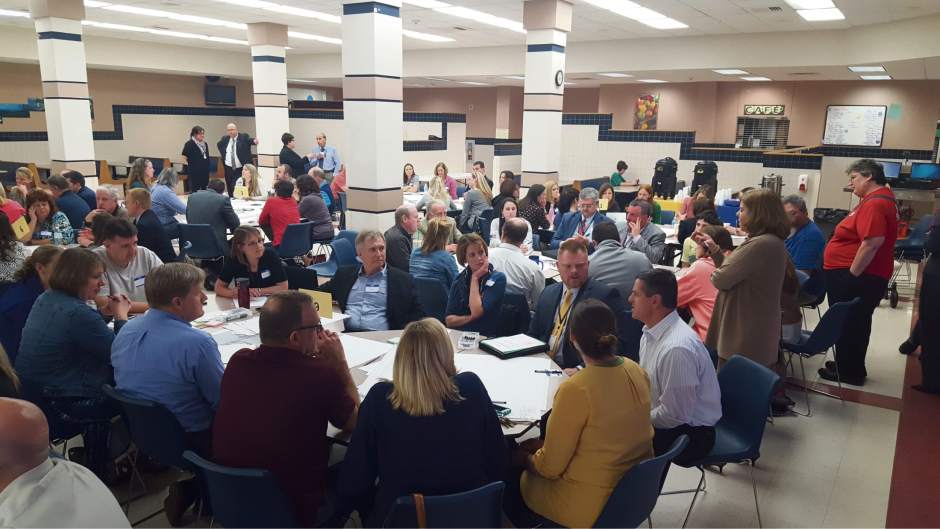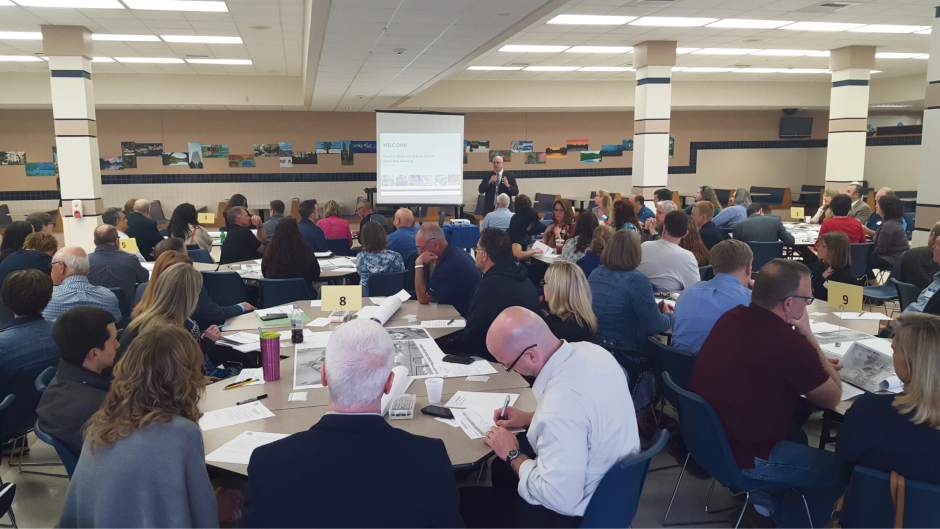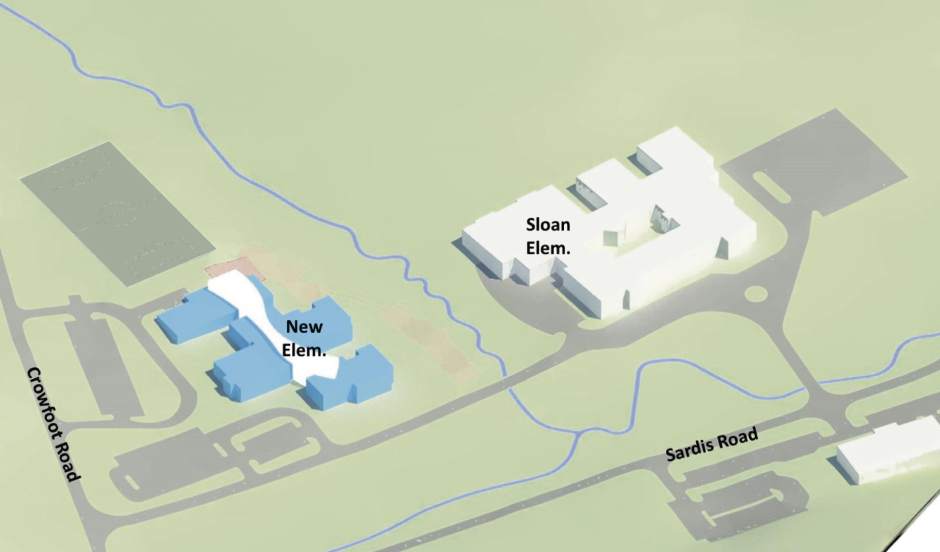Franklin Regional lays out elementary school renovation options
In planning for the district's future, Franklin Regional school officials and their architectural consultants have made it clear: the cost of moving forward may be high, but the cost of doing nothing is even higher.
About 150 district employees and residents were shown a glimpse of that future this week, as architects from VEBH presented three options district officials are considering as part of a district-wide feasibility study.
“The age of our buildings is catching up with us,” said school board member John Koury. “The status-quo option is, really, not an option. We have to do something, so the question is what are we going to do, and that's what we're here to figure out.”
The town hall meeting was structured as a series of roundtable discussions, with administrators leading staff and the public through the three options VEBH presented, which are:
• Renovate all of the district's existing buildings, starting with the elementary schools, which the feasibility study identified as the most important to address, along with a demographic study that predicted the district would see an increase in elementary enrollment over the next decade. It is the least expensive of the options, with an estimated price tag of $45 million to $49 million.
• Renovate Sloan Elementary, build a new elementary school on the main Franklin Regional campus and raze Heritage and Newlonsburg Elementary schools. The new school would be built on the ground between Heritage and Newlonsburg, ensuring that no students will be displaced during construction. Price tag: roughly $52 million to $57 million.
• Restructure how grades are grouped. Turn Sloan into an elementary serving children in kindergarten through second grade, and build a new elementary school on the Sloan campus to serve grades 3 to 5. Price tag: $53 million to $58 million.
The second and third options would mean demolishing Newlonsburg and Heritage, which VEBH Principal Architect Dan Engen said would pave the way for other improvements at the main campus.
“By razing the buildings, we can create a better parking situation and some different play-space options,” he said. “We can also try and create a better traffic flow. It's kind of interesting if you're here at the end of the day. (Traffic) kind of moves in a big pretzel.”
None of the options address future phases of work, which would include potential renovations or additions at the middle- and high-school level.
“Right now there's not really a budget for the second phases because they're further out,” Engen said.
Spokesmen for seven of the 11 roundtables said their participants preferred the third option, and each table generated lists of things they were pleased to see with each option, as well as things that concerned them and questions they had.
Koury said board members will try to answer as many questions as they can, and they hope to make a decision sometime in April.
High school principal Ron Suvak said the process is crucial to the district's long-term future.
“Our schools and our students are going to continue to do great things and get better,” he said. “But our existing facilities have some limitations.”
The fourth and final town hall meeting on the study is scheduled for 6 p.m. on April 24 in the high school auditorium.
Patrick Varine is a Tribune-Review staff writer. Reach him at 724-850-2862 or pvarine@tribweb.com.



